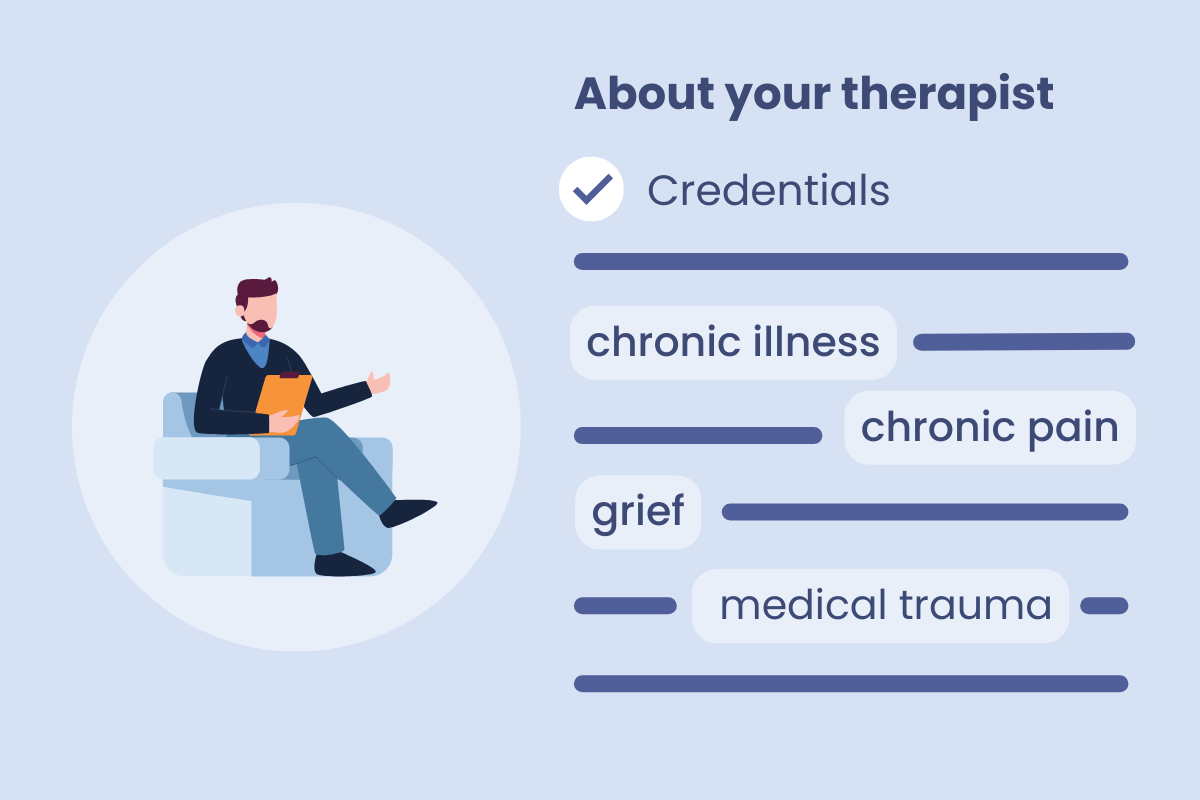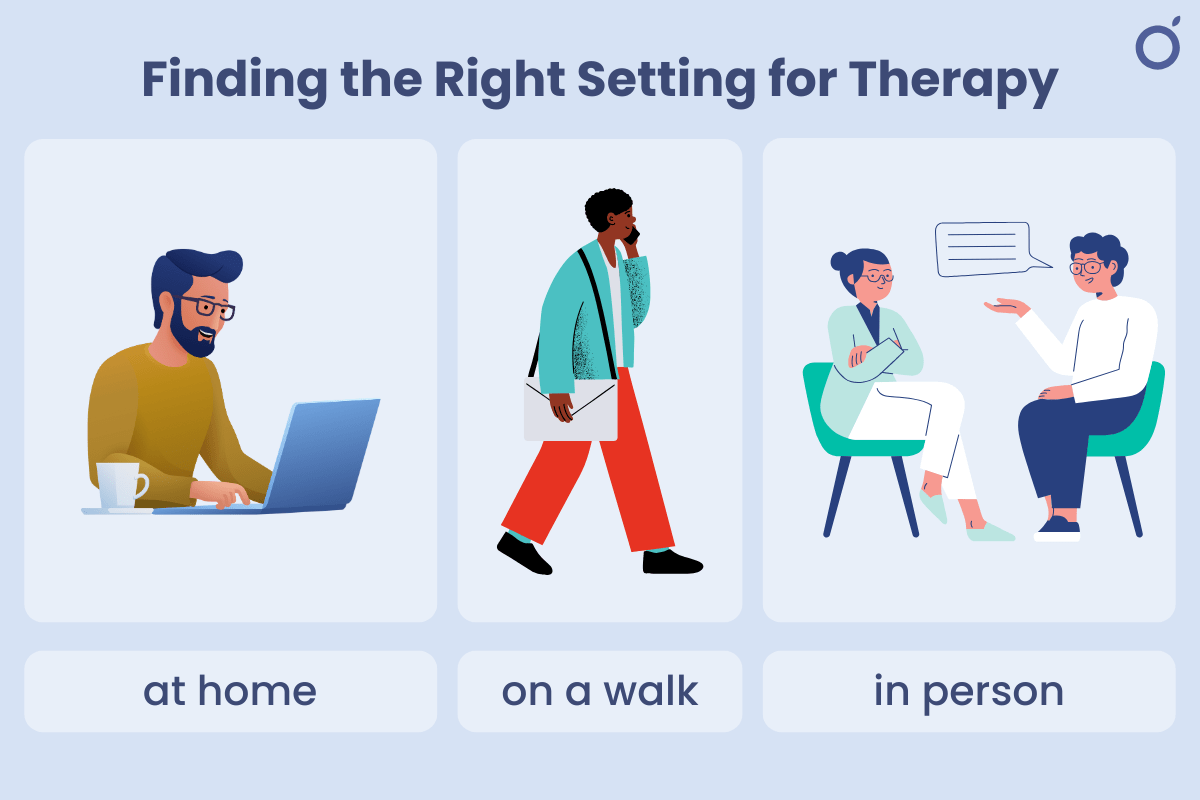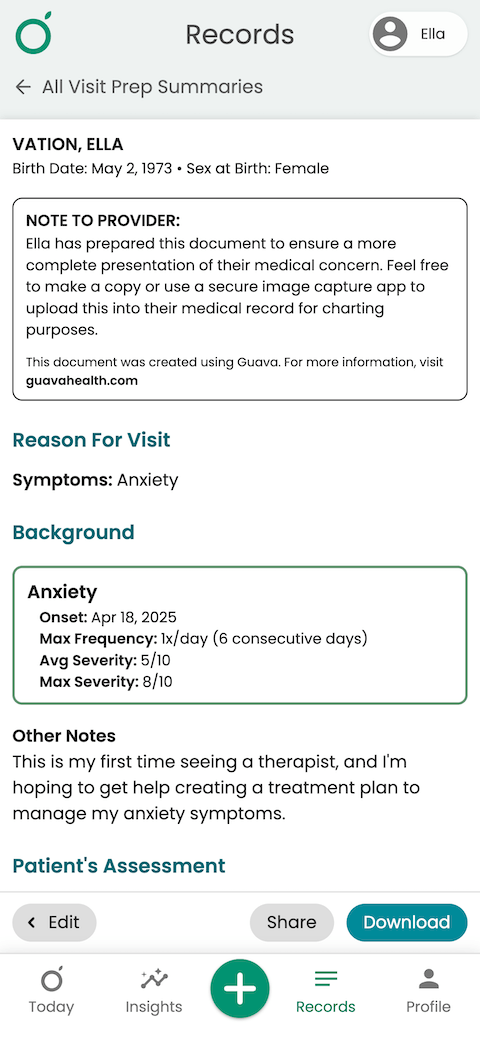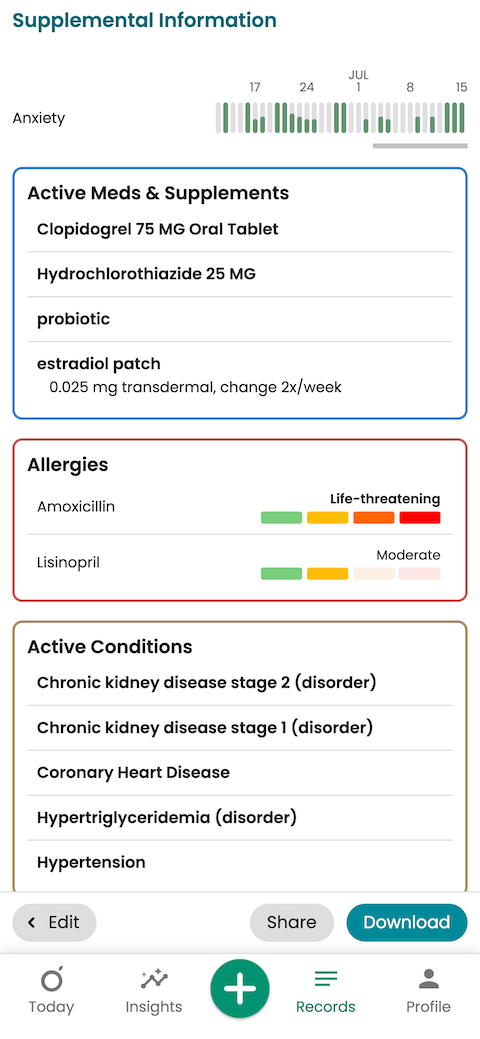
While seeking therapy while living with chronic illness can be a powerful act of self-care, it can also be an emotionally complex process. Added layers of medical history, health fluctuations, and emotional strain can make finding the right therapeutic support especially important, and sometimes, more challenging. In this guide, we’ll break down how to make the process more manageable.
Finding a Chronic Illness Therapist
Start by searching for a therapist who understands your specific needs. Websites like Psychology Today, Mental Health Match, and Find A Therapist allow you to filter by:
- Insurance coverage
- Location (including telehealth options)
- Gender identity and ethnicity
- Specializations such as chronic illness, chronic pain, grief, and dual diagnoses
Finding someone who’s experienced in navigating the emotional toll of chronic illness can make a significant difference. Each therapist should have an “about me” profile explaining their background and experience. Depending on your needs, you can look for words like “chronic illness, disability, or medical trauma.”

Prepping for the First Session
Walking into a new therapy session with a complex medical history can be overwhelming. To ease some of your stress, consider using tools like Guava, a health app designed to help people manage chronic or complex conditions. Staying organized with some of the following strategies can make a huge difference in your first session.
- Create a list of your most relevant diagnoses
- Write a short “crash course” about key themes from your past experiences
- Organize any documents that might help your therapist better understand your needs
- Brainstorm what you’re looking for and what you want from your sessions
Considering what setting would feel comfortable for you can ease anxieties before your appointment. Is telehealth a more accommodating option for managing your symptoms? Would walking in your neighborhood reduce your nervous energy? Do you need to find a private room at work to use during your lunch hour? Thinking through your options (because you have many) will help make the process more beneficial for you.

Trial & Error is Normal
You might not click with the first therapist you meet—and that’s okay. Therapeutic relationships are personal, and finding someone who feels like the right fit often takes time. If it’s not working, you have every right to seek a different provider. Most therapists understand this and support you in making the best choice for your care. If the method or modality isn’t a good fit, having a conversation with your provider about adjustment options can open other possibilities.
Setting Boundaries & Expectations
Therapy should be a space where you feel safe. You can and should set boundaries, like which topics you're not ready to explore, how you want to approach difficult conversations, and what kind of support you're seeking. Using visit prep tools to write down your thoughts and have your expectations written down can help you navigate that conversation. Clear communication can help shape a more comfortable and productive therapy experience.


It is also worth asking about their cancellation policy and how much grace they give for unpredictable chronic illness flares. Some therapists have strict cancellation policies, which result in patients being charged. The right therapist will work with you!
You Can Step Away When Needed
Chronic illness comes with ebbs and flows, and so does your capacity for emotional work. It’s okay to scale back if therapy starts to feel too intense during flare-ups or high-stress periods. Reducing session frequency or taking a short break doesn’t mean you’ve failed; it means you’re listening to your body and your current capacity. You can always let your therapist know how you’re feeling so they can help adjust your approach to meet you where you are.
In Conclusion
Although therapy can be a valuable part of managing life with a chronic illness, it’s crucial to approach it on your terms. Finding the right therapist, preparing for sessions, setting clear boundaries, and knowing you can pause or pivot are all part of the process. There’s no one-size-fits-all path, just the one that works best for you.






